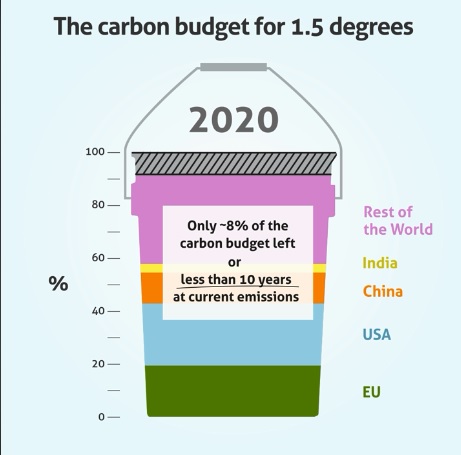What is the issue?
The net zero campaign has been gaining momentum as a number of countries and non-state actors are pushing for the world’s carbon dioxide emissions to reach net zero.
IPCC AR6 emphasised that to keep temperature rise within 1.5°C, global emissions should be reduced by 45% from 2010 levels by 2030, on the way to net zero 2050.

India’s per capita emissions are less than half the world average and less than one-eighth of the U.S.’s.
Carbon Budget is the estimated amount of carbon dioxide the world can emit still having a likely chance of limiting global temperature rise to 2°C above pre-industrial levels.
The budget is estimated to be around 1 trillion tonnes of carbon. The Global Carbon Budget is produced under the umbrella of Global Carbon Project (GCP).
References